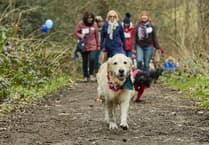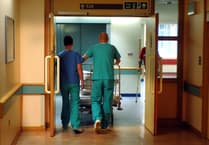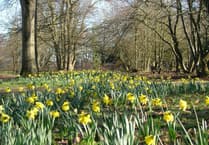A COLLECTION of histories of people and events can be found in the latest edition of the Alton Papers, which has been compiled by The Friends of the Curtis Museum and Allen Gallery and the authors whose meticulous research, complete with some nostalgic photographs, makes for absorbing reading.
It starts with the heartening story of seven year-old Jan Van Roey, who was being treated in a Belgian tuberculosis hospital when the patients and staff, including the nuns, had to flee as the German army advanced into their country in 1942.
They were put on a boat to France but the destination was changed to England and Jan ended up a patient at Morland Hall, Alton, run by Dr Henry Gauvain, of the Lord Mayor Treloars Hospital, which was renowned for the treatment of pulmonary tuberculosis.
They left in such a hurry that the children’s parents didn’t know where they had gone as many of the telegrams, sent by the nuns telling them of the evacuation, didn’t arrive until much later and Jan wasn’t to see his parents again until the end of the war.
He received wonderful care at the hospital but in September 1942 the peace of the countryside was suddenly shattered and he describes the terror as two bombs fell near Morland Hall.
Later, he and the other children described when they first arrived as a “noisy gang of rascals” and were moved to Overbury Court in Shalden.
This chapter also tells the story of the boys’ teacher, Master Verschueren, another refugee from Belgium who gives a colourful description of staying in The Swan Hotel in Alton in 1940 with its uniformed staff and waiters in tail coats.
The hotel, where there are dances in the evening, with its a wide marble staircase, multicoloured thick pile rugs, large mirrors and flowers everywhere was the most expensive in the town.
Food was served on silver platters and in war-rationed Britain he was still able to be served a breakfast of sausage and egg with small slices of toast.
Edward Hepper has done a remarkable job of research to trace the history of the origins of the coat of arms of the Knight family of Chawton, plus the two grants to the arms.
He has traced a William Knight of Callis (Calais) born 1570, but this does not fit with the Chawton Knight family tree and a map of Alton in 1666 shows only one coat of arms for Knight, Lord of the Manors of Alton Eastbrook and Truncheaunts.
In fascinating detail he covers the history of this family and their descendents, one of whom, by marriage, was Jane Austen’s brother.
Included is a detailed family tree starting with a Nicholas Knight who died in 1563 and who bought the Chawton Estate.
To add to this rich history, Jane Hurst gives a compelling account of Chawton House in the mid-1660s during the rich period of the Civil War. She also tells the story of how Elizabeth Knight, whose husband died in 1641, leaving her the use of his house in Chawton, married again in 1649 to a man called Azariah Husbands.
Intertwined with Elizabeth’s story is that of her son Richard, only two when his father died and who would go first to Oxford and then train as a lawyer. It is interesting to read the property deals he and his mother made together. There is a bust of Sir Richard in Chawton Church.
A memoir by Maria Heath Curtis tells the story of 4 High Street, Alton – The Old House – which was to become the present day Curtis Museum. Maria, one of seven children, was the granddaughter of Dr William Curtis, who attended Jane Austen.
Her fascinating history traces the Curtis family back to John, a Quaker, who came to Alton in 1719 to work as an apothecary surgeon.
Although after her marriage Maria, who was born in 1841, didn’t live in the town she wrote her childhood memoirs in 1923 for the younger members of the family and described the “Old House”, the home of her youth.
As with the rest of the book, there are photographs to illustrate her story and one of Crown Close, where the Museum and Assembly Rooms now stand, showing a rural scene of open countryside surrounded by trees. Also, there is a delightful one of the Curtis family taking tea in front of the summerhouse, and another of them playing croquet on the lawn behind 4 High Street.
Two photographs dominate the final story in the booklet, the funeral of Lieutenant Colonel Peter Mulvaney who was the officer commanding the Princess Louise Hospital on Chawton Park Road which was built as the Absent Minded Beggar Hospital for servicemen from the Boer War.
One photograph shows the former Princess Louise Hospital and postcards form a private collection, the colonel’s funeral in 1905 and his coffin being carried on a gun carriage, escorted by soldiers, to Alton station. He was buried in Brookwood Cemetery, near Woking.




